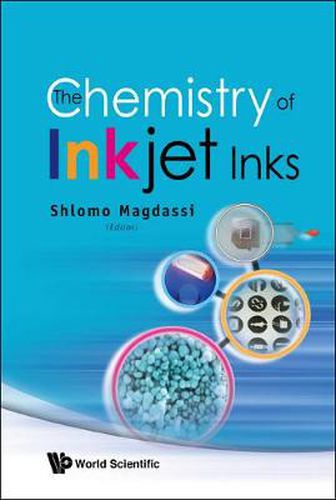Readings Newsletter
Become a Readings Member to make your shopping experience even easier.
Sign in or sign up for free!
You’re not far away from qualifying for FREE standard shipping within Australia
You’ve qualified for FREE standard shipping within Australia
The cart is loading…






Modern printing is based on digitizing information and then representing it on a substrate, such as paper, pixel by pixel. One of the most common methods of digital printing is through inkjet printers. The process of inkjet printing is very complicated, and the ink used must meet certain chemical and physicochemical requirements including those related to storage stability; jetting performance; color management; wetting; and adhesion on substrates. Obviously, these requirements - which represent different scientific disciplines such as colloid chemistry, chemical engineering, and physics - indicate the need for an interdisciplinary book that will cover all aspects of making and utilizing inkjet inks.This book provides basic and essential information on the important parameters which determine ink performance. It covers not only the conventional use of inkjet technology on graphic applications, but also the extension of this method to print various functional materials, such as the use of conductive inks to print light-emitting diodes (LEDs) and three-dimensional structures. Thus, the book will serve a large community: industrial chemists who deal with ink formulations and synthesis of chemicals for inks; chemical engineers and physicists who deal with the rheological and flow properties of inks; and researchers in academic institutes who seek to develop novel applications based on inkjet printing of new materials.
$9.00 standard shipping within Australia
FREE standard shipping within Australia for orders over $100.00
Express & International shipping calculated at checkout
Modern printing is based on digitizing information and then representing it on a substrate, such as paper, pixel by pixel. One of the most common methods of digital printing is through inkjet printers. The process of inkjet printing is very complicated, and the ink used must meet certain chemical and physicochemical requirements including those related to storage stability; jetting performance; color management; wetting; and adhesion on substrates. Obviously, these requirements - which represent different scientific disciplines such as colloid chemistry, chemical engineering, and physics - indicate the need for an interdisciplinary book that will cover all aspects of making and utilizing inkjet inks.This book provides basic and essential information on the important parameters which determine ink performance. It covers not only the conventional use of inkjet technology on graphic applications, but also the extension of this method to print various functional materials, such as the use of conductive inks to print light-emitting diodes (LEDs) and three-dimensional structures. Thus, the book will serve a large community: industrial chemists who deal with ink formulations and synthesis of chemicals for inks; chemical engineers and physicists who deal with the rheological and flow properties of inks; and researchers in academic institutes who seek to develop novel applications based on inkjet printing of new materials.